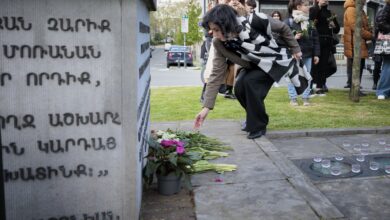Vakifli, Turkey’s last Armenian village

Perched on the slopes of Musa Dagh, in the southern Turkish province of Hatay near the Syrian border, Vakifli is a 15 minute drive from Samandag, a dusty beach town at the mouth of the Asi River on the Mediterranean sea, Kristine Mctighe writes in an article published by the Daily Beast.
More than 100 years after the villages of Musa Dagh waged a successful resistance and survived the mass killings of Armenians during World War I, Vakifli is the last remaining Armenian village in Turkey. As its population dwindles, the village is drawing tourists with its stunning views of the surrounding mountains and Mediterranean Sea, complicated history, and a chance to experience its culture before it disappears.
At the entrance of Vakifli, the bumpy roads make way to a newly paved street, lined with fragrant orange and lemon trees. Bright pink and red roses fill gardens near old stone houses. Windmills rotate on hilltops off in the distance to the east. Looking out to the more to the west, lush green hills roll out to meet the Mediterranean sea.
Home to some 135 mostly middle-aged and elderly residents who are the descendants of the Armenians who stood up to the Ottoman army in 1915, every corner of this tiny, tranquil village is suffused with its past.
In 1997, as Turkey moved towards membership in the European Union, authorities approved the renovation of Vakifli’s church. The newly renovated church helped jump-start tourism, as did an ecotourism program.
Then in 2004, the town was chosen for an organic farming project and became one of the first and only places in the region to receive EU certification. In recent years, however, that project was abandoned because it became too expensive to keep their certificate updated, according to Berc Karton, the moktar, or village leader. Their produce and food products are still natural, he said, and help keep the village financially afloat.
According to the author, while the Armenian population, and Vakifli as it stands today, could all but disappear within a generation, like their ancestors who fought for their existence, today’s villagers and their families are fighting to keep their village, culture, and traditions alive.
For the full story click here.








